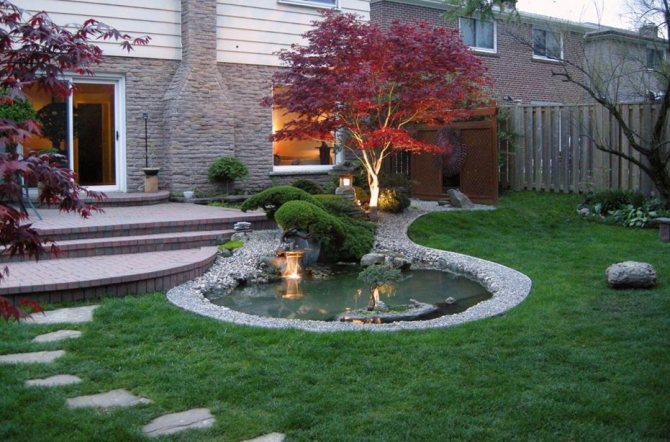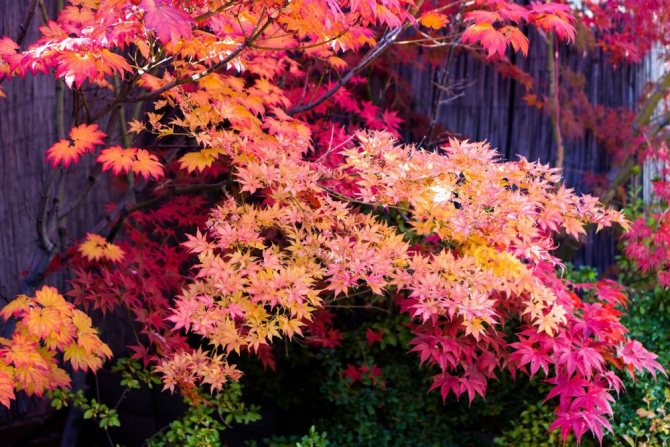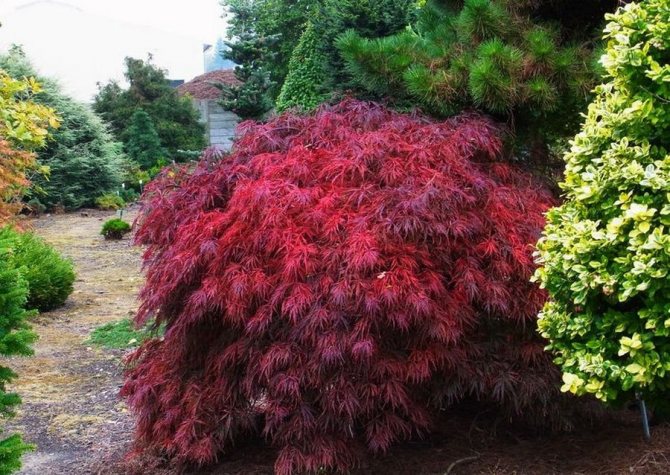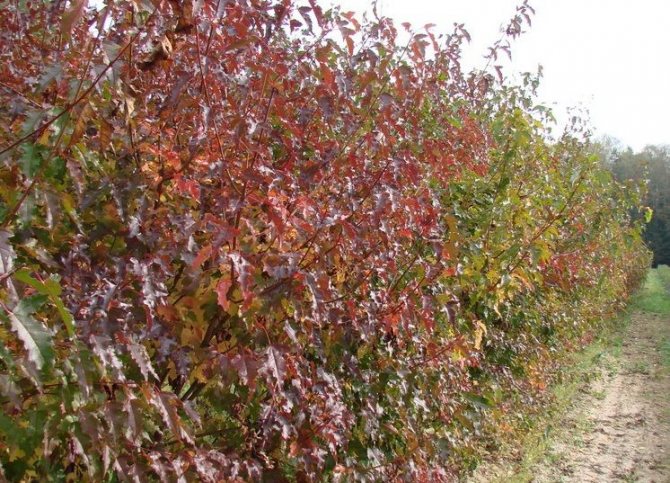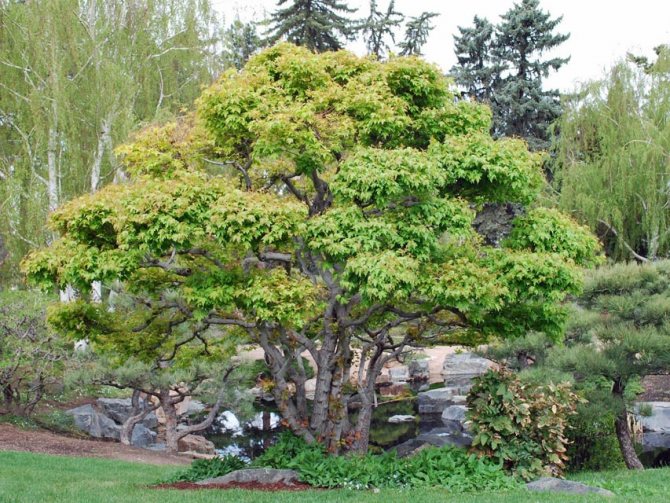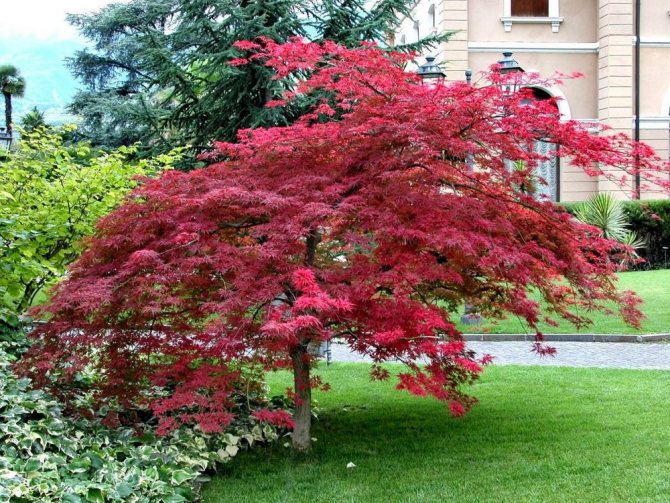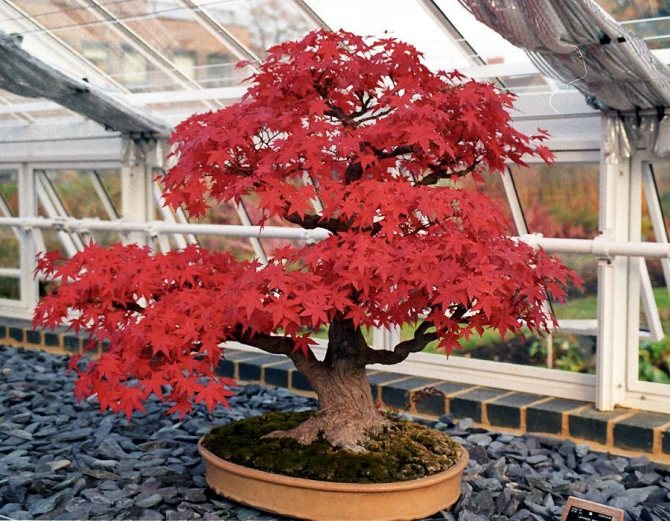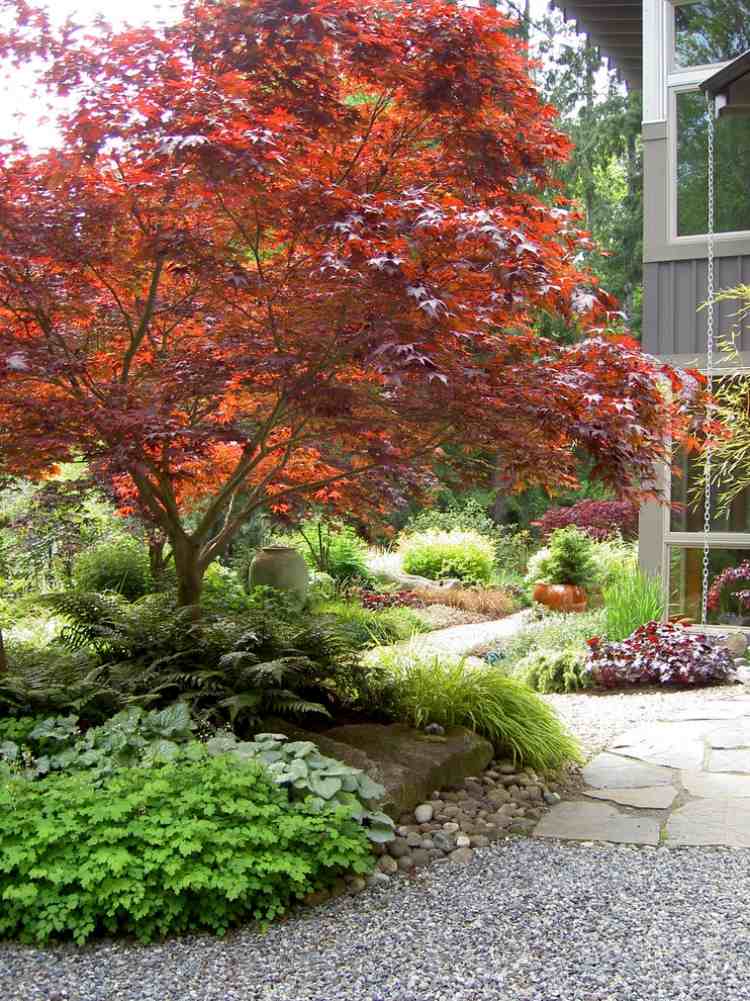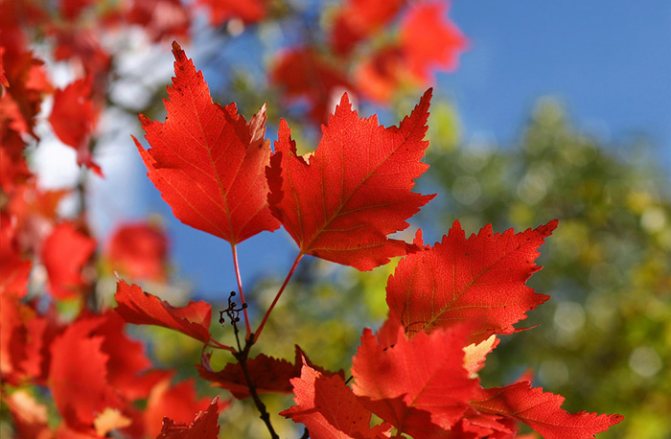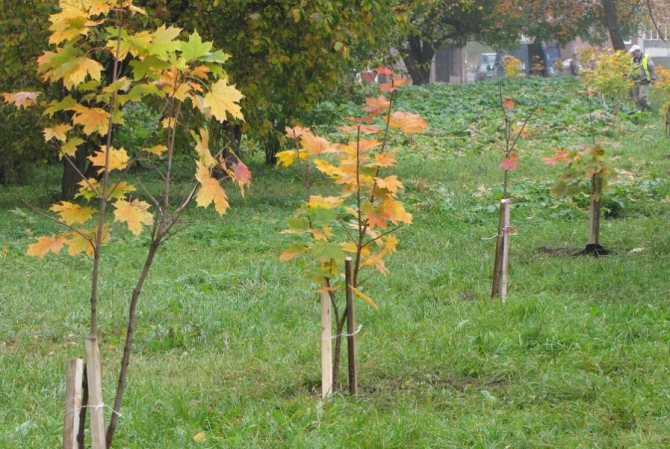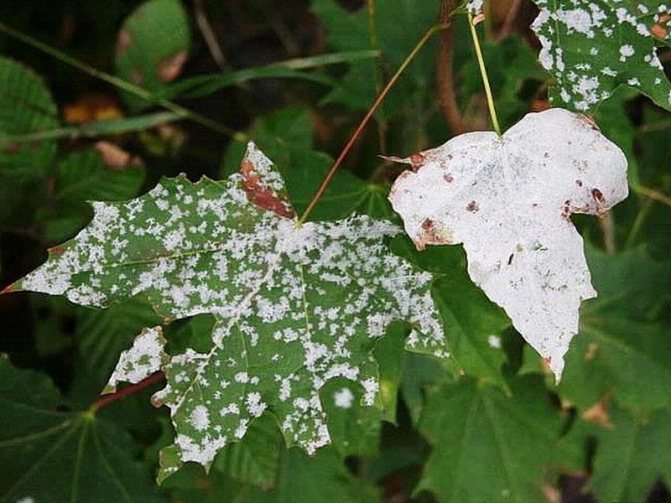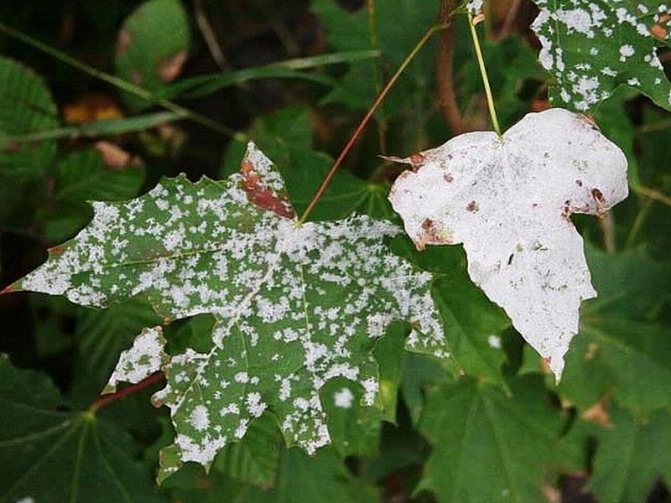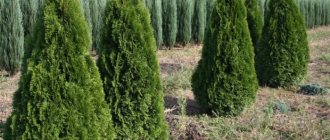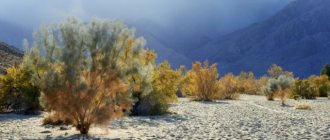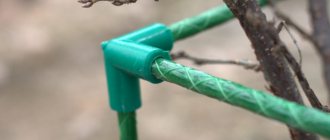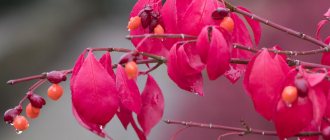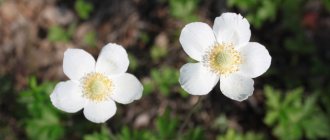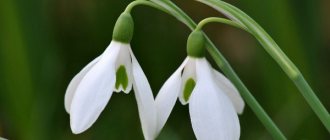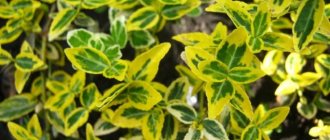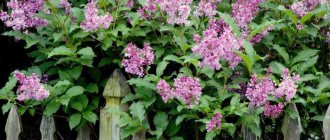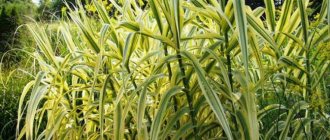If it is necessary to plant a low ornamental plant on the site, which will become a hedge or create a cozy shady corner, you should pay attention to the Ginnal maple.
Ginnala maple is a low tree or sprawling shrub with a short trunk and a beautiful wide crown, widely used for landscaping garden and park areas. Landscape designers have long fallen in love with an unpretentious perennial plant that truly transforms in the fall. Then its foliage becomes carmine - red shades, bewitching those around it with riot and variegated colors. How to grow Ginnal maple on your own? What kind of care does a culture need? How does the plant reproduce? Read the detailed information in this selection of material.
River maple: description
The Latin name for the breed is "Acer ginnala Maxim". The culture first appeared in 1860. It is a fairly large shrub, sometimes growing to the size of a small tree. The birthplace of maple is considered to be China, Korea, the Far East and the southeastern part of Mongolia. It differs in a tent-like crown, quite wide and dense, if there is only one trunk, then its shape can be conical. Trees of this species grow by 30-60 cm per year. The flowering process begins after the leaves open. Such a maple has a multi-flowered panicle inflorescence, of a yellowish tint and with a light fragrant aroma. In summer, fruits appear on the trees - lionfish. They have an elongated shape, somewhat reminiscent of wings. Their size reaches up to 3 cm, and the color can change depending on the sun's impact: from green to bright red. A curly leaf, reminiscent of three connected blades, of which the middle one is elongated a little more than the rest.
An interesting description of the Ginnala maple plant. The photo is presented below.
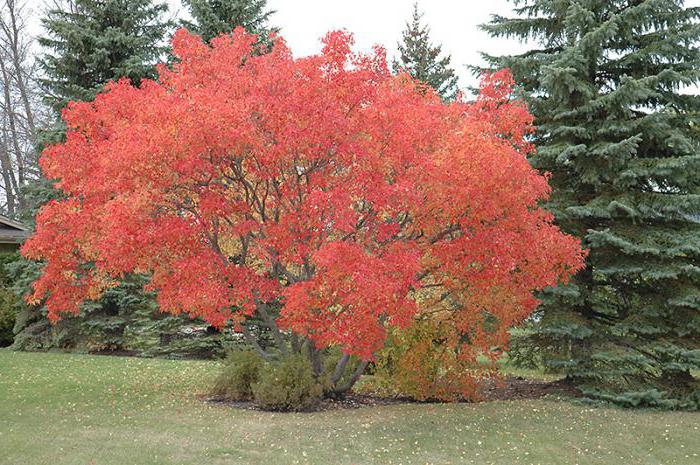
Features of the tree:
- crown dimensions reach 5-7 m;
- tree height - up to 6 m;
- growth rate is moderate;
- life span - more than 100 years;
- leaves change color in autumn, grow up to 10 cm;
- flowers are small, about 5 mm, round, flat;
- the breed belongs to ornamental plants.
External characteristics
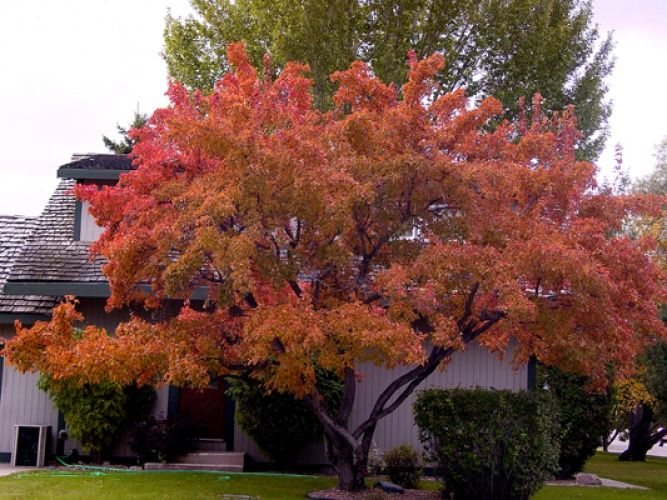

Maple Ginnala is a deciduous tree or shrub with a height of 3 to 5 meters. The spreading tent-shaped crown has an unusually beautiful red - carmine leaf color. They are three-lobed, up to 8 cm long. The middle of the leaf is the largest and most protruding, while the lateral ones are almost at right angles.
Only 3 weeks of flowering with fragrant creamy flowers in multi-flowered panicles at the end of May gives others an excellent aroma. The ripening red lionfish of the fruit are decorative, the bark has a light brown golden color and twists in vertical stripes. Its crown is asymmetrical, the trunk is curved in an interesting way.
This plant is quite unpretentious and has a high threshold of frost resistance, it grows both in partial shade and in sunny areas. River maple, as it is also called, can be found in the Far East in the wild. The bottom of the trunk is exposed. The annual growth of the maple is 25 cm both in height and in width. It is related to the Tatar maple and is its subspecies.
Using
This type of maple can be used as a hedge.This method is common in cities. Frequently planted trees can be found around the roads. In late autumn or early spring, the crown is trimmed, giving it a neat shape. Also, these trees are used to decorate suburban areas, creating beautiful compositions. In parks and squares, you can find both groups and the solitary Ginnal maple.
Features of this breed:
- sufficient frost resistance of an adult tree;
- germination on any kind of soil;
- resistance to arid climate;
- love for a lot of light.
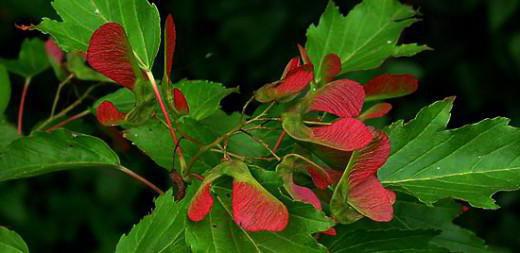

Growing features
- Choosing a place. Since maple loves a lot of light, you should choose an open place for planting. Small penumbraes are allowed. Dark areas will cause the leaves to lose their natural color.
- Landing. It is not recommended to deeply deepen the root system of a tree into the ground. The allowed parameter is no more than 5 cm for varieties with a developed root system. How to plant Ginnal's maple? Planting is carried out in a fertilized soil with humus or other mineral fertilizers.
- If the groundwater passes very close to the landing site, then it is necessary to build a drainage from rubble.
- Irrigation rates: in summer - up to 20 liters per week, in autumn and spring (during the rainy season) - up to 20 liters once a month. The dosage is based on one plant unit.
- Loosening of the soil near the trunk should be carried out regularly, especially after watering, in order to avoid compaction of the soil.
- Additional fertilizing can be applied only one year after planting. Such types of fertilizers as "Superphosphate", urea, kemira, potassium salts are suitable.
- Pruning is done every year.
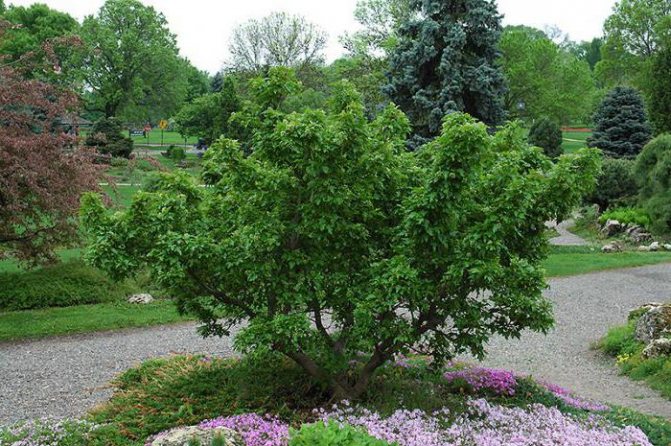

Landing rules
Planting can be done in spring and autumn. It is important to properly prepare the planting pit. This process begins two to three weeks before the seedling is placed in it. It is dug 0.7 m in depth and 0.5 m in width, humus and mineral fertilizers are added. Digging a hole for planting a maple tree
The soil mixture is prepared from the following components:
- humus (peat compost) - three parts;
- turf land - two parts;
- sand is one piece.
If it is planned that the trees will grow alone, then the distance between adjacent plants should be from 2 to 4 m.When planting in a hedge, a distance of 1.5-2 m should be adhered to.
Before planting, the bottom of the pit must be loosened well. To do this, you can pierce it several times with a pitchfork.
If the plants sit in a hedge, then it is necessary to dig a trench and plant, leaving a distance of 1-1.5 m.In this case, you can slightly deepen the root collar - up to 5 cm.We dig a trench for planting a maple
The seedling must be selected in a specialized nursery. Better to take a two-year copy. He must be healthy in appearance, without signs of wilting, defects, damage. If the root system of the seedling is open, then you need to make sure that everything is in order with it, it is sufficiently developed and does not have any rot or other diseases.
A seedling is carefully placed in the prepared planting hole and the root system is straightened. In this case, the root collar should be at ground level. Then the pit is covered with the prepared mixture. After they are slightly tamped. Planting the Ginnal maple
Immediately after planting, the plant will need to be watered abundantly, and the soil in the near-stem circle should be mulched using peat, straw, spruce branches, sawdust. The mulch is laid in a layer of 5-10 cm. It will allow you to retain moisture at the roots, warm them in winter and protect them from the appearance of weeds.
Maple Ginnal: winter care
Adults tolerate severe frosts well, but young ones do not. They need additional insulation, especially if there is little snowfall in winter. As a rule, the section of the root collar is the most unprotected, therefore it is recommended to cover the tree with spruce branches.If the plants are 2-3 years old, then it is imperative to wrap the tree trunk with burlap in two layers. Later, such a need disappears by itself.
In early spring, crown shoots are examined for frost damage. The dead branches must be cut so that the Ginnal maple does not waste energy on their restoration. Subsequently, the crown grows to its usual size due to young shoots, which by the beginning of the next winter have time to be covered with tree bark.
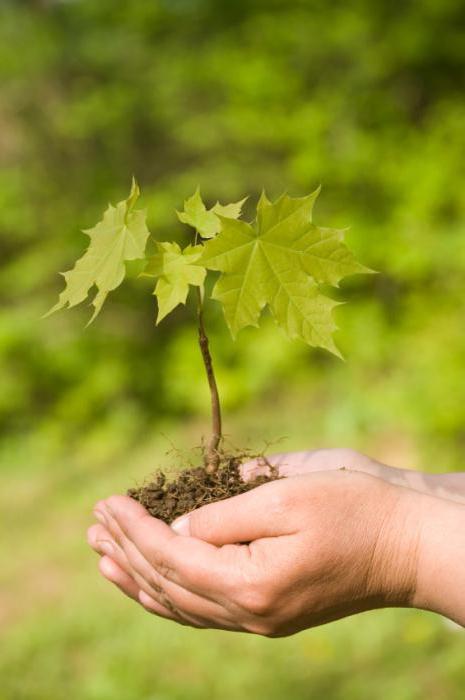

Experienced gardening tips
- When buying seedlings, special attention is paid to the root system. Be sure to check for growths and other diseases. If the roots are well developed, and the tree itself is very flimsy, then this indicates some kind of violation.
- Planting is done only in spring or summer.
- To prevent trees from clogging each other, it is recommended to maintain a distance between seedlings of 2-4 meters.
- In case of maple disease, the affected branches are completely cut off, and the cut sites are treated with a special garden pitch.
Leaf diseases
Ginnal's maple is susceptible to infectious diseases.
- Powdery mildew appears as a white bloom on the leaves, usually in May-June. The rapid development of such a disease is facilitated by an arid climate. New foci of infection appear within 10 days. By the end of summer, the white dots change color, first to yellow, then to black. The virus survives even in winter, infecting the soil. Ripe ascospores infect new foliage in spring.
- White spot. At the end of summer, numerous irregular white spots appear on the leaves. In the center of them there is a focus of a viral disease, represented by a small dot of black color.
- Brown spot. The fungal pathogen infects the leaves in the first months of summer. It appears as brown and red spots.
- Pink spot affects both sides of the leaf. The focus of the disease develops directly under the stain.
- Leaf deformation occurs due to the development of the fungal pathogen Taphrina polyspora. Typically, the affected areas turn black or dark brown.


Major diseases
Maple foliage is susceptible to the following diseases:
- Powdery mildew. It looks like a white coating on the leaves. Appears in May - June. Towards the end of the summer period, the white dots turn yellow and then black. Even the winter cold does not save you from the disease, it goes into the soil and, with the arrival of spring, infects new leaves.
- White spot. The disease manifests itself on foliage at the end of summer with multiple white spots. In the center of each spot there is a focus of the disease - a small black dot.
- Brown spot. Fungal disease affects the leaf in the first months of summer. It looks like brown and red spots.
- Pink spot. The disease affects leaves on both sides. Her hearth is right under the stain.
- Fungus Taphrina polyspora. Causes leaf deformation. Usually, sore spots turn black or dark brown.
The branches and trunk of the plant can suffer from diseases such as:
- Wilt. This disease is capable of killing shrubs. The vessels of the trunk and branches become victims of the fungus, which deprives the plant of adequate nutrition.
- Nectric necrosis. The disease attacks the bark and blood vessels of the bush. It spreads through rainwater and insects. This type of fungus can kill the maple.
- Cytosporosis. This disease is evidenced by the appearance of local necrotic lesions on thin trunks and branches. Often, the affected bark becomes somewhat lighter or darker.
- Diplodious necrosis. It is betrayed by the appearance of black growths on the maple bark, which are rough to the touch.
For effective treatment, it is important to detect the infection in time, which is why you should carefully examine the tree every week and remove its diseased parts in a timely manner.
As a preventive measure, the following are suitable:
- Maple should not be planted in places where beets, potatoes and sunflowers used to grow, as the wilt could remain there.
- Timely pruning will help eliminate damaged areas of the plant, as well as reduce the spread of possible disease.
- The trimmed parts of the tree must be removed from the site, preferably burned to prevent new infestation.
Ginnala maple, with proper care, will become an adornment of any park, garden or personal plot for many years. All summer it will be a worthy part of landscape design in the form of a luxurious green bush, and in autumn it will bring bright colors to the garden's palette with its magnificent crown.
Diseases of branches and tables
- Wilt. A very serious disease that can lead to the death of the tree. The fungus affects the vessels of the trunks and branches, preventing adequate nutrition. The affected tree begins to dry out gradually.
- Nectric necrosis affects maple bark and blood vessels. At the beginning of the disease, the plant begins to wither, and then dries up altogether. The fungus is spread by rainwater and insects.
- Cytosporosis develops mainly on thin trunks and branches. It manifests itself in the form of local necrotic lesions. Often, the affected bark changes color, becoming lighter or darker by several shades.
- Diplodious necrosis is expressed by black growths on the bark of a tree. The infected areas are rather rough to the touch.
Growing places
The growing places of this type of maple are East Asia, Southeast Siberia. The plant can often be found in Japan, China, Mongolia and Korea. The tree grows along river banks as well as in coastal areas. Because of the latter peculiarity, the culture was named riverside. And also the tree can grow in mountainous areas, in forests with good illumination and dispersion of sunlight.
This culture is considered a good honey plant. The honey that is harvested from this type of maple contains about 2.5 percent sugar, as well as about thirty percent tannins.
Birds love to settle in the lush green mass of ginnala maple, bullfinches feast on its seeds. Branches and buds are for small squirrels.
Treatment methods
The main condition for a successful recovery is to notice the source of infection in time. Therefore, it is recommended, especially in summer, to carefully examine the trunks, branches and leaves of trees every week. Even if at first glance the Ginnal maple is completely healthy, then protective preventive measures are still necessary.
Places where beets, potatoes, sunflowers previously germinated are not suitable for this tree, since they can potentially be a source of an infectious disease of wilt.
An effective method of prevention is timely pruning, with which you can remove damaged areas. These branches, leaves and trees should not be left in the area, as the fungal infection can spread to healthy plants.




